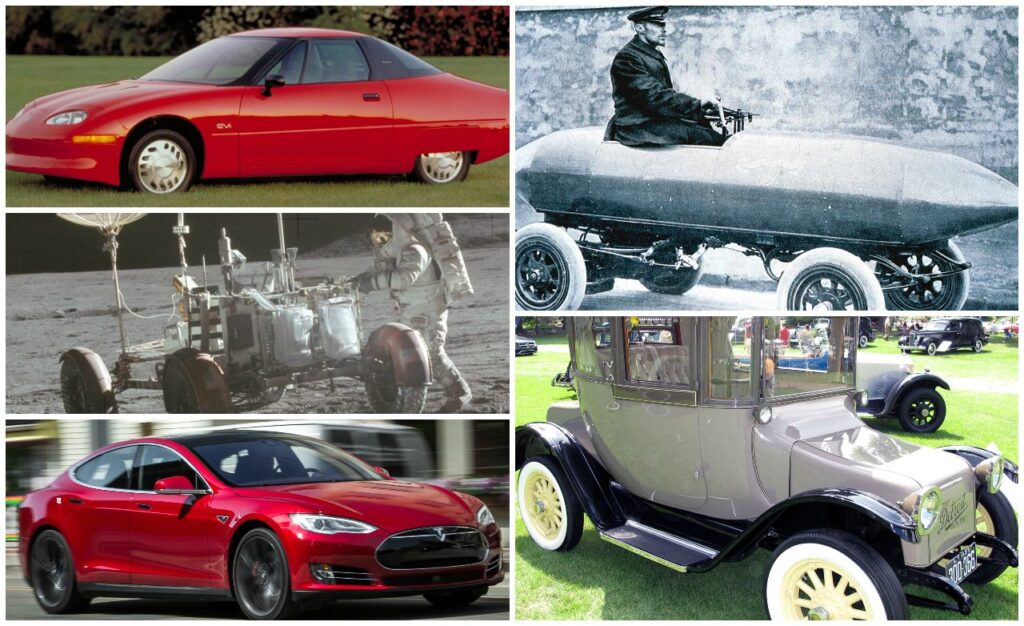Electric cars, often hailed as the future of transportation, actually have a rich and storied past that dates back to the early days of the automobile industry. Their journey from novelty to mainstream transportation option is marked by innovation, competition, and an ever-evolving technological landscape.
The Early Beginnings (1830s – 1900s)
The concept of electric vehicles (EVs) is as old as the idea of automobiles themselves. The first crude electric vehicle was developed by Robert Anderson in Scotland around 1832-1839. However, it wasn’t until the late 19th century that electric cars began to gain more practical traction.
In 1889, William Morrison, a chemist from Des Moines, Iowa, built the first successful electric vehicle in the United States. His six-passenger vehicle could reach a speed of 14 miles per hour. This was a remarkable feat for its time and helped spark interest in electric propulsion.
The Early 20th Century: A Golden Age for Electric Cars
By the turn of the 20th century, electric cars were quite popular. In fact, they accounted for around one-third of all vehicles on the road in the United States. The reasons for their popularity included their smooth, quiet ride and the fact that they did not require hand-cranking to start, which was a significant challenge with early gasoline engines.
Companies like Baker Electric, Columbia Electric, and Detroit Electric were at the forefront of this early electric car market. These vehicles were especially popular among urban residents and women due to their ease of operation.
The Decline (1910s – 1970s)
The decline of electric cars began in the 1910s, primarily due to several key developments. First, the discovery of large petroleum reserves in Texas reduced the price of gasoline, making gasoline-powered cars more affordable. Second, Henry Ford’s introduction of the mass-produced and inexpensive Model T in 1908 made gasoline vehicles accessible to the masses. Finally, improvements in internal combustion engine technology, including the invention of the electric starter by Charles Kettering in 1912, eliminated many of the inconveniences associated with gasoline cars.
By the 1930s, electric cars had all but disappeared from the roads. They remained a niche product, used primarily in specialized roles such as milk delivery and other local deliveries where their limited range was less of a disadvantage.
The Revival Attempts (1970s – 1990s)
The oil crises of the 1970s rekindled interest in electric vehicles. Concerns over air pollution and the finite nature of fossil fuels led to renewed efforts to develop viable electric cars. However, the technology of the time was still limited, and these early revival attempts were often hampered by the high cost and poor performance of batteries.
Notable among the electric vehicles of this era was General Motors’ EV1, introduced in the late 1990s. The EV1 was a fully electric vehicle that garnered a loyal following, but GM controversially discontinued the program in 2003, citing high costs and a lack of consumer interest.
The Modern Era (2000s – Present)
The true resurgence of the electric car began in the early 21st century, driven by advances in battery technology, growing environmental awareness, and government policies aimed at reducing greenhouse gas emissions.
In 2008, Tesla Motors (now Tesla, Inc.) launched the Tesla Roadster, which could travel more than 200 miles on a single charge. This was a groundbreaking achievement that showcased the potential of electric cars to compete with gasoline-powered vehicles in terms of both performance and range.
The success of the Roadster was followed by the Tesla Model S in 2012, which set new standards for electric vehicles with its luxury features, long range, and high performance. Other automakers, including Nissan, BMW, and Chevrolet, also began developing and releasing their own electric models, such as the Nissan Leaf, BMW i3, and Chevrolet Bolt.
The Future of Electric Cars
Today, the electric car market is growing rapidly. Advances in battery technology continue to improve range and reduce costs, making electric vehicles more accessible to a broader audience. Governments around the world are implementing policies to promote the adoption of electric vehicles, including subsidies, tax incentives, and investments in charging infrastructure.
The future of electric cars looks promising, with projections suggesting that they could represent a significant portion of global vehicle sales within the next few decades. Innovations such as autonomous driving technology and further improvements in battery efficiency are likely to continue shaping the evolution of electric vehicles.
In conclusion, the history of the electric car is a story of early innovation, decline, and eventual resurgence. From the pioneering work of early inventors to the modern advancements spearheaded by companies like Tesla, the journey of the electric car reflects broader trends in technology, economics, and environmental awareness. As we look to the future, electric cars are poised to play a central role in the transformation of transportation and the fight against climate change.
